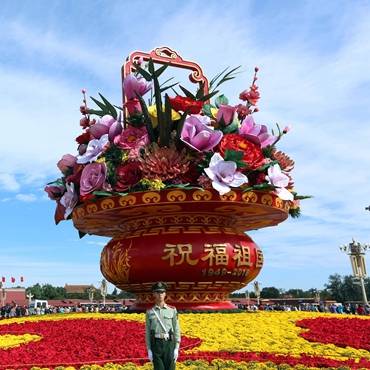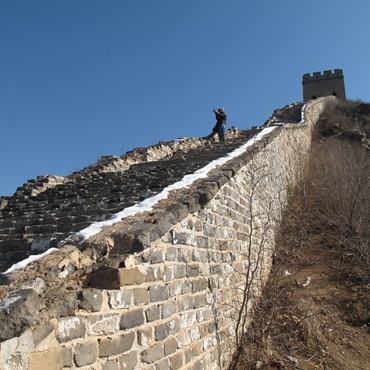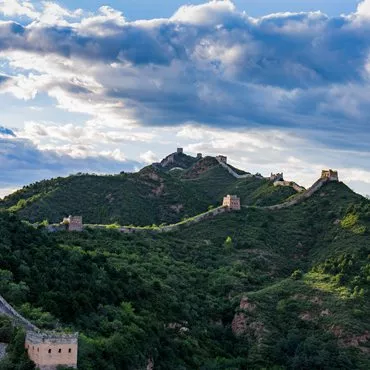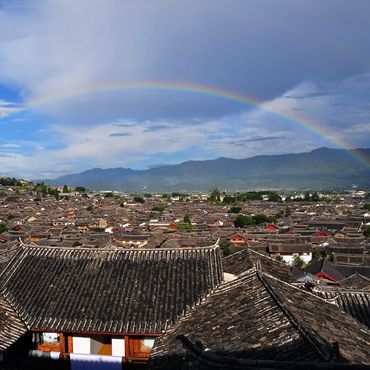National Museum of China
The National Museum of China, abbreviated as NMC or Guobo in Chinese, stands as a monumental edifice on the eastern side of Tiananmen Square in central Beijing. Situated along the southern stretch of East Chang'an Avenue, it forms a symmetrical counterpart to the Great Hall of the People to the west. More than a mere repository of national treasures, the NMC serves as the pinnacle of historical, cultural, and artistic exploration, representing the essence of Chinese civilization through its vast collection, profound research, and enlightening exhibitions.
The origins of the National Museum of China can be traced back to the preparatory office of the National History Museum established in the first year of the Republic of China (1912). In 2003, it underwent a significant merger, combining the resources and exhibitions of the former Chinese History Museum and the Museum of the Chinese Revolution to form the unified National Museum of China. A pivotal moment in its history arrived in 2012 when the museum completed a comprehensive renovation and expansion project, marking a new era of accessibility and grandeur for visitors worldwide.
The architectural marvel of the NMC seamlessly integrates the preserved facades of its historic buildings with modern innovations. Spanning a sprawling area of 70,000 square meters, the museum rises majestically to a height of 42.5 meters, encompassing five above-ground floors and two subterranean levels. Within its expansive confines, visitors can explore 48 exhibition halls covering nearly 200,000 square meters, making it the largest single building museum in the world.
The museum's vast collection comprises over 1.43 million artifacts, spanning ancient relics, contemporary cultural treasures, and artistic masterpieces of diverse categories. From oracle bones, bronze ware, and exquisite porcelain to jade artifacts, precious metal crafts, ancient coins, and Buddhist sculptures, the collection offers a panoramic view of China's rich cultural heritage. It extends further to include rare manuscripts, stone inscriptions, seals, calligraphy, paintings, sculptures, lacquerware, furniture, architectural remnants, enamelware, glassware, textiles, handicrafts, vintage photographs, ethnic cultural artifacts, and revolutionary memorabilia.
In recognition of its cultural significance and contribution to heritage preservation, the National Museum of China was designated a "National First-Class Museum" by the State Administration of Cultural Heritage in November 2012. Moreover, in October 2020, it was identified by the Ministry of Culture and Tourism as one of the "Sixth Batch of National Key Protected Units of Ancient Books." Notably, the museum achieved global acclaim by ranking second in the 2020 Global Theme Park and Museum Index Report, underscoring its stature as a beacon of cultural dissemination and education.
Beyond its physical dimensions and extensive collections, the National Museum of China embodies a profound mission: to safeguard the collective memory of the nation, perpetuate the cultural DNA of China, and foster mutual understanding through cultural exchanges. It serves as a cultural salon for the nation, where visitors can delve into millennia of history, marvel at the ingenuity of ancient craftsmen, and contemplate the enduring legacy of Chinese civilization.
Visitors to the NMC are not mere spectators; they are participants in a journey through time and culture. Each artifact, meticulously curated and displayed, tells a story of innovation, resilience, and artistic achievement. From the intricate details of ancient bronzes to the serene beauty of classical paintings, every exhibit invites contemplation and sparks curiosity about the past.
The museum's role extends beyond preservation and exhibition; it actively engages in scholarly research, educational outreach, and international collaborations. Through seminars, workshops, and interactive exhibitions, it fosters a deeper appreciation for Chinese culture among domestic and international audiences alike. It serves as a bridge between generations, connecting ancient traditions with contemporary interpretations, thereby enriching cultural discourse and inspiring creativity.
In essence, the National Museum of China is not merely a destination for tourists; it is a cultural pilgrimage for those seeking to understand the essence of China's past and its impact on the present. It invites visitors to explore the complexities of Chinese civilization, from its early beginnings to its global influence today. Whether admiring the craftsmanship of ancient artifacts or contemplating the evolution of Chinese society through centuries, every visit to the NMC promises an enriching and enlightening experience.
As a beacon of cultural heritage and artistic achievement, the NMC stands as a testament to China's enduring legacy and its commitment to preserving and celebrating its rich cultural heritage. It beckons travelers and scholars alike to embark on a journey of discovery, where each exhibit unveils a new chapter in the story of humanity's shared history.
In short, the National Museum of China is a custodian of China's past, a curator of its present, and a steward of its future. It embodies the spirit of cultural exploration and scholarly inquiry, inviting all who enter its doors to witness the beauty of China's heritage and the richness of its artistic traditions. Whether you are a historian, an art enthusiast, or a curious traveler, a visit to the NMC promises an unforgettable encounter with the wonders of Chinese civilization.
















